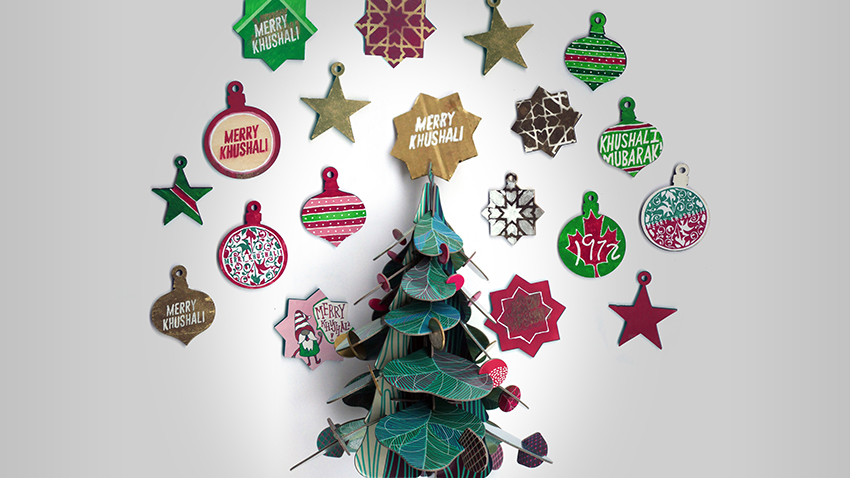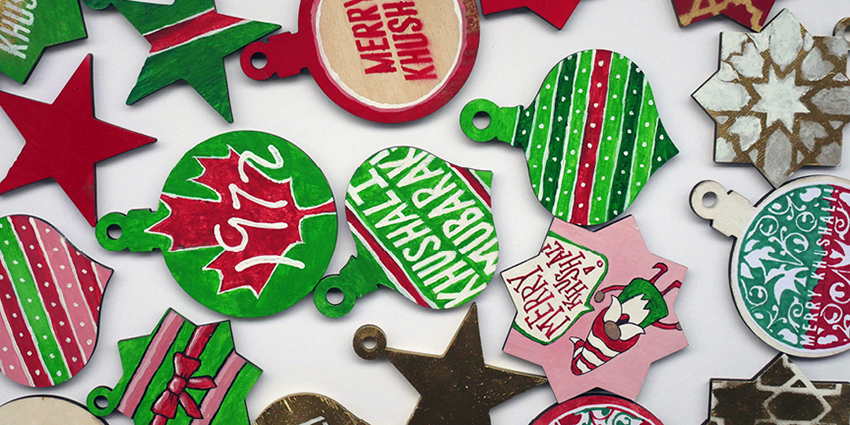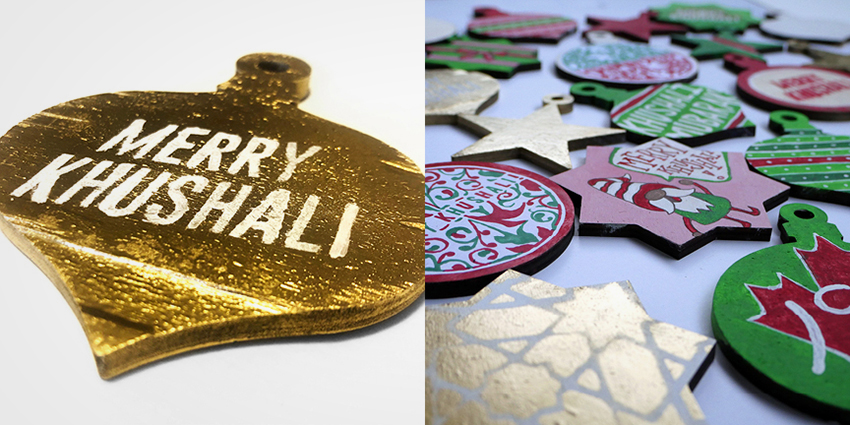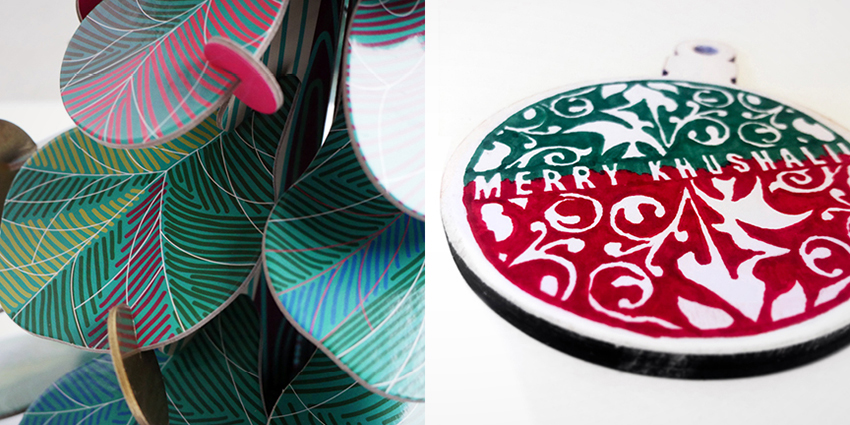What is “Merry Khushali!” about?

This project presents a series of Christmas-style ornaments honouring the Ismaili Muslim celebrations called Khushali (or Khushiali) – one of which takes place on December 13.
Building on memories of the artist’s upbringing as a Muslim in somewhat-secular Canada, the work references the assimilationist approach of the Ismaili diaspora. Painted in the style of hand-made decorations, these objects feature the colours of the Ismaili flag that happen to be the colours of Christmas: red and green. This coincidence allows these celebratory items to “blend in” with the prevalent winter holiday aesthetic. Whether this tongue-in-cheek display is cultural erasure or pluralist fusion, “Merry Khushali” asks us what kinds of diversity are hiding in plain sight.
Do you really say “Merry Khushali”? Is this a real thing?
We actually say “Khushali Mubarak!” But “Merry Khushali” is a cheeky way of saying the same thing. With any festive greeting, you’re also saying “I care about you” and “We are a part of this together.”

Why do you say that Canada is “somewhat secular”?
In Canada, there is a formal separation of church and state, but you can’t deny how our colonial roots are intertwined with the Church. If you’re part of a religious minority, you might notice the prevalence of Christmas in the public sphere – even how we organize our vacation time as a society – as compared to Eid or Passover or Diwali. Christians in Canada don’t need to ask for “time off” for Easter or Christmas because they’re already accommodated. I’m fine if someone says “Merry Christmas” to me in the grocery store, but it’s not quite as acceptable to wish a stranger “Eid Mubarak” in our country. I don’t mean this as a complaint; I just like to point out the nuances. (Bill 21 in Quebec is another story.)
What are some things you remember from your childhood about Khushali?
As a kid, I remember noticing that our celebration on December 13 happened around Christmas time. The school year was structured around “winter holidays,” so it was on my mind as a student of public school in Canada. There are traditional festivities, upbeat events with dancing, special refreshments, and sometimes, presents! I couldn’t help but simplify things as a kid and think “Khushali is like Ismaili Christmas!”

Do you think all Ismailis believe in assimilating?
In a way, yes. I don’t just mean that any settler community tends to adjust to where they live. It’s actually an explicit part of Ismaili Muslim doctrine to respect the laws and cultures of wherever you live. Ismaili Muslims are a persecuted minority within the Islamic world with a history of migration, adaptations and resilience. Ismailis live in over 25 countries around the world. The former religious leader of Ismailis (grandfather of the current Imam) stated in his memoirs, “Ismailism has survived because it has always been fluid. Rigidity is contrary to our whole way of life and outlook.”
The aesthetic of this project is a bit more “simple” and “handmade” than most of your other fine art work, isn’t it? Was that intentional?
I like making fancy portrait paintings, but I also like messing around with day-to-day creative outlets – home-made birthday cards, adding cashews to curries, doodling in notebooks, that sort of thing. Everyone has an artist inside of them and I like the idea of elevating “everyday crafts” and treating them with the same respect and appreciation as an oil painting. I’m very aware of how my work as “an artist” is sometimes treated differently than your grandmother’s knitting or your uncle’s baking. We’re all making cool stuff.

Tell us about the paper tree.
The tree is based on a design by a company called Karm Marg that I’ve adapted for my purposes. I love that it’s a sustainable and portable version of a christmas tree as a metaphor for migration and diaspora. Throughout our history, Ismailis have had to “pack up and move,” so it’s fitting that the tree can be easily deconstructed, customized, and re-assembled elsewhere.
Anything else you’d like to add?
I want to make a bigger version of this project in the future. I envision members of the public walking by this “giant Christmas tree” at a museum, and as they look closer, they realize that it’s actually celebrating something called Khushali. “Khushali? What’s that?” asks one woman. “You gotta read the artist statement over there,” says her wife. “Oh! It’s an Ismaili Muslim holiday! How neat!”
